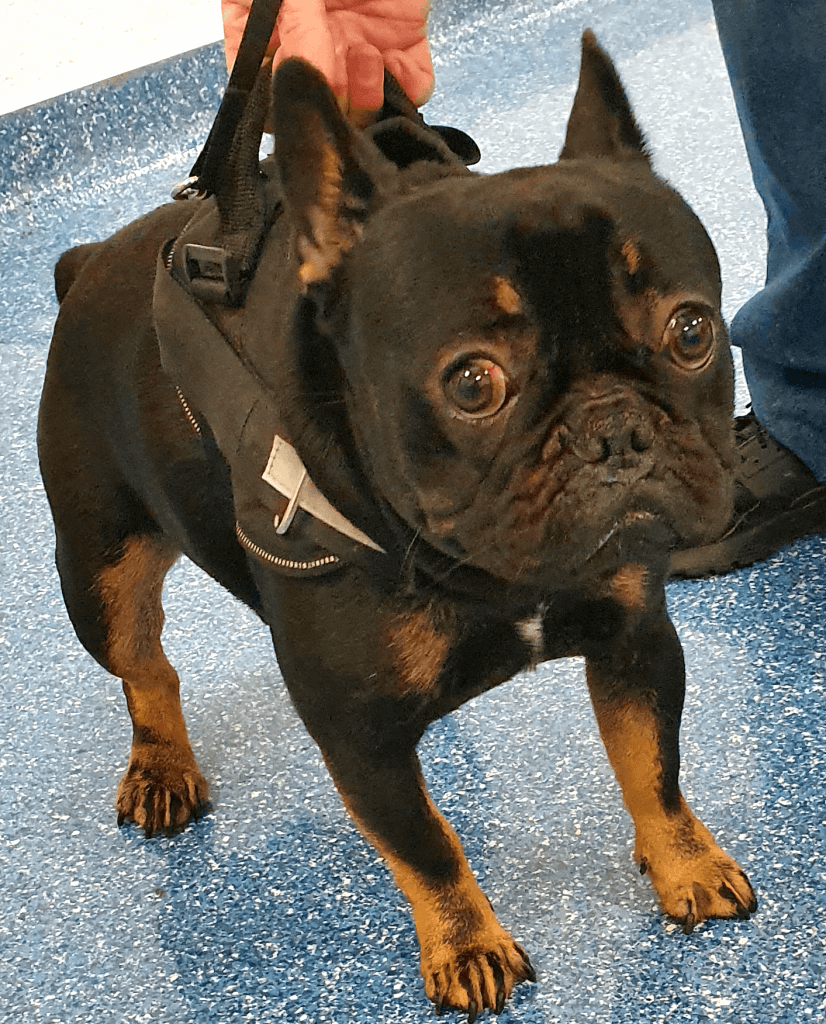What is brachycephalic obstructive airway syndrome?
Brachycephalic obstructive airway syndrome, or ‘BOAS’, is a condition often seen in flat-faced dog breeds and refers to the range of problems they can have which causes issues with their breathing.
Brachycephalic obstructive airway syndrome (BOAS) is caused by several different factors:
- An excessively long and thick, soft palate: The soft palate sits at the back of the roof of the mouth. When it is too long, it covers the airway making it difficult for the animal to breathe freely.
- Narrow trachea (windpipe): A narrow trachea makes it harder for the air to flow into the lungs.
- Everted laryngeal saccules: These normally sit in little pockets at the entrance of the trachea. In dogs suffering from BOAS, they can sometimes evert out of their pockets and obstruct the trachea even further.
- Stenotic nostrils: Narrowed nostrils increase air resistance through the nose, making it hard for air to get in and out of the body.
These factors can all contribute in varying degrees to obstruct the airway and make breathing more difficult. The inflammation caused means that it is usually progressive and will get worse over time.
Which breeds does brachycephalic obstructive airway syndrome affect?
Brachycephalic airway syndrome is exclusively a problem of small to medium dog breeds such as French Bulldogs, British Bulldogs, Pugs, Boston Terriers, and Pekinese. These dogs have been bred over time to have shorter snouts, which means that the same amount of soft tissue is attached to a much smaller skull than in longer nosed breeds, and therefore it blocks the airway.
The excessive amount of soft tissue in a crowded space results in the factors listed above.
Some studies show that up to 75.4% of French bulldogs have moderate to severely stenotic nostrils and up to 64.6% of pugs suffer from significant BOAS symptoms.
What are the symptoms of brachycephalic obstructive airway syndrome?
The majority of affected dogs can begin to show symptoms between one and three years old, although severely affected dogs may show signs from as young as four months old.
These symptoms include:
- Noisy breathing and/or snoring. Often brachycephalic dogs will breathe through their mouths most of the time as breathing through the nose is too difficult.
- Inability or disinterest in exercise. This is due to them being unable to take insufficient oxygen and therefore it requires more stamina to help them cool down and breathe.
- Overheating. The nasal cavity plays an important role in a dog’s temperature regulation and so dogs with BOAS struggle to maintain the correct body temperature in hot weather.
- Collapse or ‘fainting’. The dog may collapse or faint, caused by a lack of oxygen reaching the brain. This is often exacerbated by exercise or hot weather. In severe cases, these collapses can lead to death.
Sadly these symptoms are so common that they are often thought of as ‘normal’ for these affected breeds.
How is brachycephalic obstructive airway syndrome diagnosed?
In a lot of cases, the breed and symptoms are enough for a diagnosis. However, sometimes it is necessary to examine the dog’s throat under anaesthetic as the back of the throat cannot be visualised when conscious.
Blood tests, an assessment of the heart, X-rays, endoscopy (a flexible camera inserted into the airways) and a CT scan may all be used to investigate the different areas that may be affected.
What are the treatment options for BOAS?
This is often dependant on the severity of the condition. In mild cases, conservative management may be effective. Examples include:
- Weight loss. Carrying excess weight drastically worsens the symptoms of BOAS and leads to a greater risk of complications. Average weights for breeds are not that helpful — it is better to have your dog’s body condition score assessed by a veterinary surgeon or nurse.
- Prevent overheating. These dogs are at more risk of overheating than other breeds, and overheating carries a greater health risk for them.
- Walk them on a harness. Using a harness to walk these brachycephalic breeds instead of a collar helps to prevent undue pressure on the neck. While it is a legal requirement for dogs to wear a collar with an ID tag attached while outdoors, do not attach a lead to it – use a harness.
- Medication. This can be useful in the short term. Anti-inflammatories and oxygen therapy can be used to control a breathing crisis. Some antacids can be used to treat gastric reflux and regurgitation.
In more severe cases, surgery should be considered. Although some of the factors contributing to BOAS cannot be changed, some can be surgically altered to help improve the dog’s breathing such as:
- Shortening the soft palate
- Widening the nostrils
- Removing the laryngeal saccule
It is important to remember that whilst all anaesthetics have a small amount of risk associated, the risk may be higher in these animals due to their difficulties in breathing and the sensitive areas being operated on.
What is the long term prognosis of BOAS after surgery?
The aim of the surgery is to dramatically improve the dog’s ability to breathe by reducing the resistance to air in the airway. The extent of this improvement is variable due to BOAS being a multifactorial condition, but many dogs will show a significant improvement to their ease of breathing and their ability to exercise. It can take several weeks after the surgery before the full extent of improvements can be seen.
The immediate recovery in the days following the surgery is usually very good. Your dog may even, depending on surgeon preference, be able to go home the same day. Often, one or two post-operative checkups are required in the days following the procedure.
If you are concerned that your dog is exhibiting any of the symptoms of BOAS, you should book free consultation with your local Animal Trust vet to discuss what are the best options for your pet.




